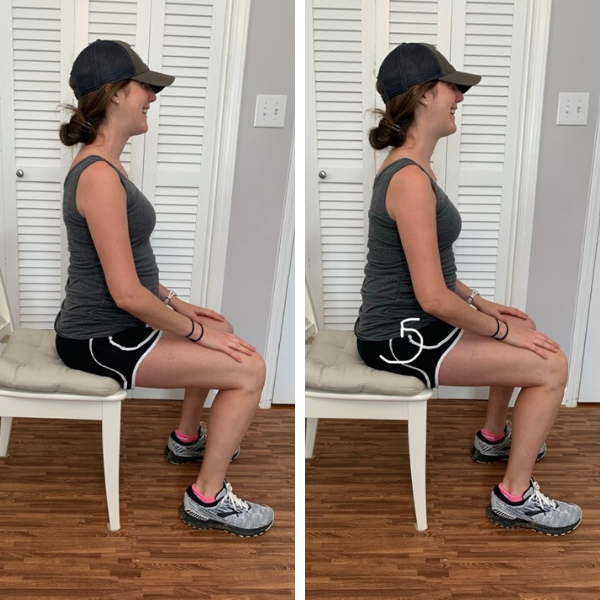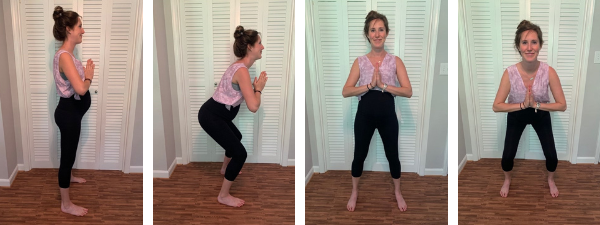Staying active throughout your pregnancy packs a wallop of benefits for you and your baby.
Incorporating daily exercise in each trimester can help you improve quality of sleep, maintain good circulation, improve posture, release endorphins, administer a sense of wellbeing, maintain a healthy weight, reduce the likelihood of gestational diabetes and hypertension and give your baby a healthier start.
Routine exercise may also help prepare muscles for childbirth and prevent or lessen back and pelvic pain commonly experienced during pregnancy.
The American College of Obstetrics and Gynecology recommends 30 minutes or more of moderate exercise per day on most days of the week, unless you have a medical or pregnancy complication. Discuss your plans with your MD before beginning a new exercise routine.
Exercises good for every trimester:
- Walking
- Swimming
- Cycling on a stationary bike
- Low-impact activities like yoga and dance
Exercises to stabilize the pelvis and low back:
Kegel
This exercise is generally recommended for pregnant women to prepare the pelvic floor muscles for childbirth and post-partum. However, it is not
recommended for women with an overly tight pelvic floor. If you have a bladder or bowel issue, please consult a physical therapist who can help address your specific complication.
You may perform kegel exercises in any position.
- To start the exercise, tighten your pelvic floor muscles and count to 3-5 seconds. Think about pulling up and in as if you are preventing the flow of urine or gas.
- Then relax the muscles for 3-5 seconds.
- Perform 10 repetitions.
- You may connect your breath to the exercise, contracting your pelvic floor muscles on the exhale and relaxing your pelvic floor muscles on the inhale. Kegels can be added to any of the following exercises listed below.
Pelvic Tilt
In your first trimester, this exercise may be performed while lying on your back. In your second and third trimesters, perform this exercise while sitting or standing.
Reclined

- Begin by lying on your back with your knees bent and your feet on the floor.
- Exhale and contract your abdominal muscles, rotating your pelvis upward.
- Hold for 3-5 seconds and relax to the starting position.
- Perform 10 repetitions.
Seated

- Sit in a chair with your weight equally distributed through your feet on the floor.
- Follow the same steps as Lying Down.
Standing

- Stand with your feet approximately hip-width apart. Distribute your weight equally through your feet.
- Follow the same steps as Lying Down.
Quadruped Cat

- Begin on your hands and knees, with shoulders over your hands and hips over your knees.
- Gently exhale and contract your abdominal muscles, pushing your spine up toward the ceiling and allowing your head to fall gently toward your chest.
- Hold for 10-15 seconds and resume the starting position.
- Perform 10 repetitions.
Bird Dog

- Begin on your hands and knees, with shoulders over your hands and hips over your knees. Engage your abdominal muscles and keep your spine straight.
- Slowly raise and extend your right arm and left leg to be level with your spine.
- Hold for 3-5 seconds and resume the starting position.
- Then alternate the exercise with your left arm and right leg.
- Perform 10 repetitions.
Squat

- Stand with your feet shoulder-width apart.
- Bend your knees and move your hips backward as if you’re going to sit in a chair. Keep your knees behind your toes.
- Only bend as far as you feel comfortable, then return to the starting position.
- Perform 10 repetitions.
Resisted Side Step

You can also perform this exercise without a resistance band.
- Stand with a gentle resistance band around your thighs (easier) or ankles (harder). Keep your feet slightly apart and your knees slightly bent.
- Sidestep to the right 10 times.
- Then sidestep to the left 10 times.
Resisted Kick Back

You can also perform this exercise without a resistance band.
- Stand with a gentle resistance band around your thighs (easier) or ankles (harder). Keep your feet slightly apart.
- With your right leg, perform 10 small and controlled kicks backward.
- Then perform 10 small and controlled kicks backward with your left leg.
Side-Lying Leg Raises

- Lie on your left side with your shoulders, hips and ankles in a straight line. You may place a small pillow under your side to keep your spine straight.
- Slowly and controlled, raise your right leg to a 45-degree angle (pain-free range of motion), then lower your leg.
- Perform 10 repetitions with your right leg.
- Switch to lying on your right side, and perform 10 repetitions with your left leg.
Side Bridge

- Lie on your left side with your knees bent to 90 degrees. Make sure your shoulders, hips and knees are in a straight line.
- Engage your abdominal muscles and slowly lift your right hip.
- Hold this position for 3-5 seconds, then slowly lower your hips back to the floor.
- Perform 10 repetitions on each side.
Safety tips for exercising while pregnant:
- After your first trimester, avoid exercising while lying flat on your back.
- This position causes the uterus to put pressure on a major vein called the inferior vena cava, which pumps blood back to your heart. Impeding this blood flow can make you dizzy, short of breath or nauseated.
- Exercise in a safe environment and avoid uneven terrain. As you gain weight during pregnancy, your center of gravity will shift and can affect your sense of balance.
- Wear supportive shoes.
- Avoid over-heating and drink water before, during and after exercise.
- Do not exercise to the point of exhaustion. If you cannot talk while exercising, slow down the activity or take small breaks.
Frequently Asked Questions
What exercises are safe for relieving pregnancy-related back and pelvic pain?
Walking, swimming, yoga, pelvic tilts, cat-cow stretches, bird dogs, squats, and side-lying leg raises are all gentle, effective options.
How often should I perform these exercises during pregnancy?
Aim for at least 30 minutes of moderate exercise most days of the week, unless your doctor advises otherwise.
Are there any safety precautions I should take while exercising during pregnancy?
Avoid lying flat on your back after the first trimester, stay hydrated, wear supportive shoes, exercise on even surfaces, and stop if you feel dizzy or short of breath.
Comments
February 02, 2022
February 02, 2022
Back




June 07, 2024